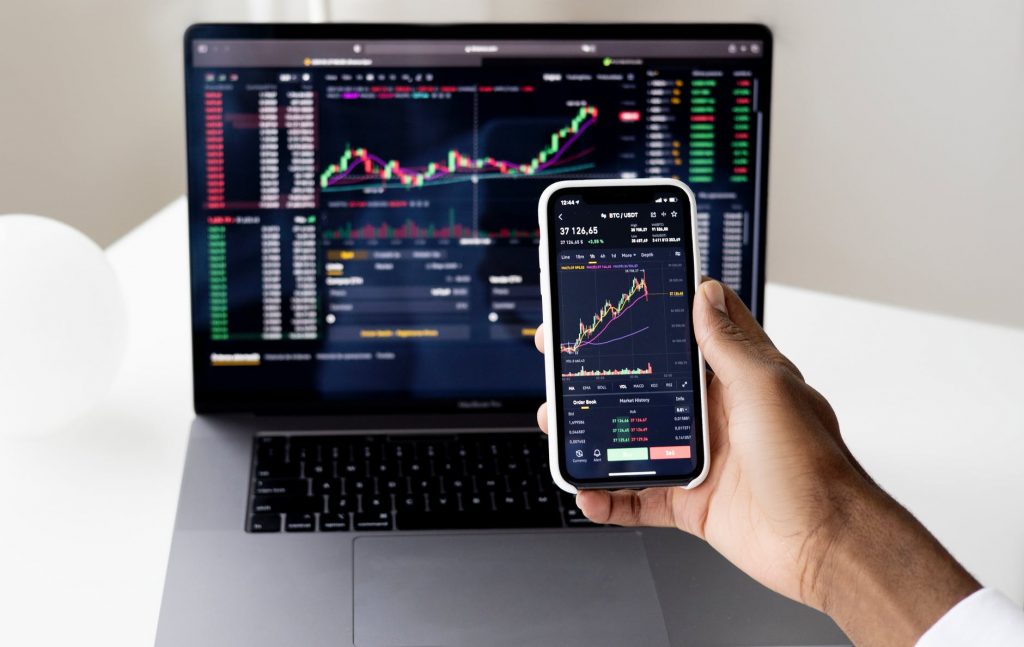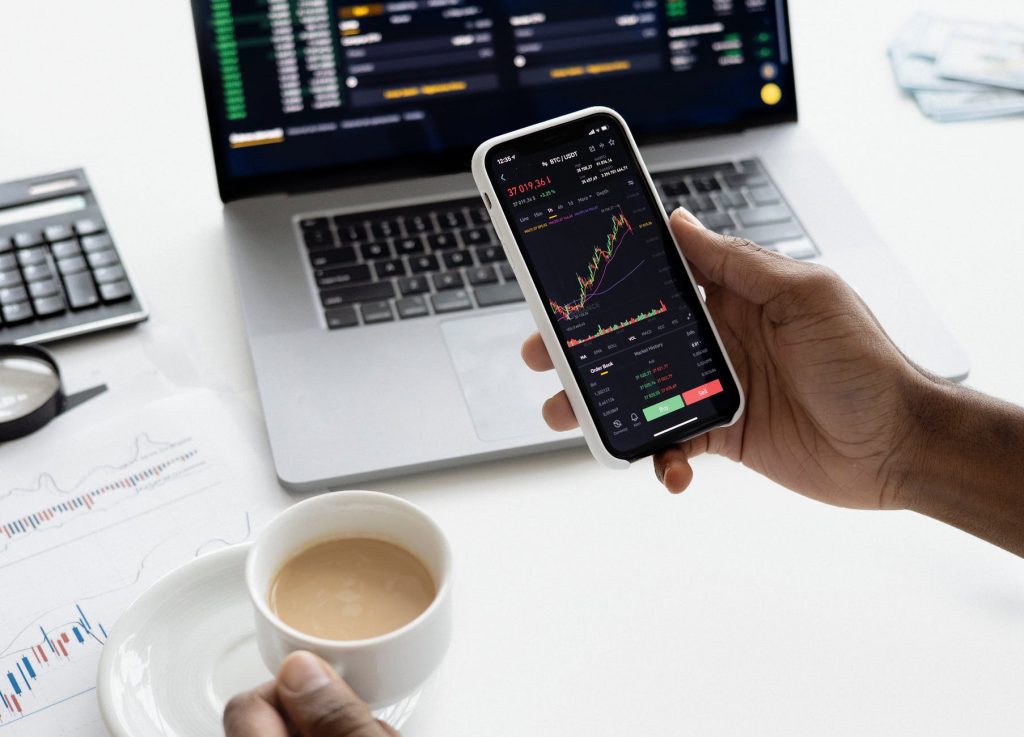Leverage Trading
Leverage trading is a common strategy among UK investors, though it may seem like an alien concept for beginners. So how does it work? This guide explains the basics, including what a leverage ratio is, what zero or non-leverage trading is and whether you can be taxed for it. Use our tutorial to get started with leverage trading, from the best brokers to FCA regulations.
Brokers with High Leverage
All Brokers with High Leverage
What Is Leverage Trading?
Leverage trading in the UK is a system by which a trader borrows capital from their broker to increase the size of a position they wish to open. This allows investors to access returns not usually possible with low capital. Leverage can be applied to both long (buy) and short (sell) positions. However, it is important to note that leverage trading can magnify losses just as it can increase profits.
Once the trader closes a position, the leveraged loan is returned to the broker and the trader keeps the profit. In the UK, leverage trading rates for retail clients is limited by the Financial Conduct Authority (FCA) to 1:30, which can also be written as x30. If you qualify for a professional trading account, brokers can offer leverage up to 1:500.
You can use leverage trading with traditional brokers as well as decentralised finance (DeFi) exchanges. Most brokers offer a free margin trading calculator to help you calculate potential profits or losses. They may also offer specialised tools, like risk, crypto or liquidation price calculators.
If you are leverage trading spot stocks, you may get paid dividends. Your broker might keep these dividends until you close the position, but they can also be used to offset any debts.
Leverage Trading Example
Consider trading a CFD on gold using margin. If the price of gold is currently £1,000 per ounce and you expect the price to rise, you will want to open a long position to benefit from the increase. With leverage of 1:30, you could open a position 30x larger than the capital you wish to put forward.
So, if you put down £200, you can open a position worth £6,000, equal to six ounces of gold. If the price of gold rises to £1,100 per ounce, your position could be sold for £6,600, giving you a profit of £600. Without leverage, you would have earned £20 on top of your £200 investment.
However, accessing higher profits also means you are risking greater losses. If your prediction was wrong, and the price of gold dropped to £950, your losses would be £300 – higher than your initial investment. Without leverage, you would have only lost £10. Some brokers will stop you from getting into debt when trading on leverage by automatically closing your position. This is called liquidation or negative balance protection.
Leverage Trading vs Spot Trading
Where spot trading requires the full price of an asset’s price to open a trade, leverage trading can be done with a fraction of it. This increases your market exposure, though spot traders do not deal with borrowed funds so the risks are lower.
Leverage Trading vs Options
Similar to margin trading, options allow you to access assets you may not have had the capital to invest in. However, leverage both increases your market exposure and magnifies profits and losses, where options simply do the former.
Regulated Leverage Trading In The UK
Leverage trading in the UK is both legal and regulated, with traders able to access margin on equities and derivatives, including forex, spot stocks, indices and futures. Note that the FCA has banned the use of CFDs and other derivatives when trading cryptocurrency in the UK, meaning spot cryptos are the only option for regulated brokers in the United Kingdom.
The FCA limits leverage trading to 1:30 to protect retail investors:
- Forex – 1:30
- Indices – 1:20
- Gold – 1:20
- Commodities – 1:10
- Crypto – 1:2
Each broker will often set its own rules and leverage limits on individual assets, often depending on their volatility.
The UK presents some advantages to leverage trading in the USA (United States), Australia, India, Singapore and other big economies. There are fewer limitations in legal trading strategies and the brokers are highly regulated, which means you have more flexibility and safety. Crypto markets such as BTC/XRP are especially volatile, so both the US and the UK have extra limitations on leverage limits.
Leverage Trading Strategies
There is no single formula to trading with leverage in the UK. However, we have compiled a list of the most popular strategies and tips to get you started:
- Scalping – This strategy aims to profit from a large number of high-volume, short-term trades in one day. Scalpers generally hold positions for a brief period, often just a few minutes, and take advantage of small price movements by selling as soon as the trade becomes profitable. The idea is to have such a high volume of trades that the profits will mount up. High leverage allows traders to maximise their profits using this strategy by taking larger positions.
- Swing Trading – Swing traders aim to capitalise on greater price shifts than scalpers by holding positions overnight or even for several weeks. Medium and long-term investments give traders exposure to much larger price movements. Using leverage for swing trading will multiply your trading volumes. Exposure to high profit also means exposure to high losses, so efficient risk management is key to successful leveraged swing trading.
- Day Trading – A day trade is simply any trade that is opened and closed within one trading day. As price movements during one day are often small, leverage allows traders to capitalise on even the smallest fluctuations. Leveraged day trading on volatile assets, like Bitcoin, Ethereum and other altcoins, can produce high profits, but also quick losses. Day traders also avoid added charges, such as overnight holding fees (swaps). Intraday news trading is a form of day trading, where traders buy or sell assets around important news stories and economic releases.
There are also many margin trading strategies explained online, for any asset or leverage rate you can think of. For example, you may find a ‘100x leverage trading strategy for dummies’ PDF, a ‘2x leverage trading crypto on Kraken’ YouTube video or even a ‘5x, 10x or 50x, leverage trading 101’ blog.
How To Start Leverage Trading
Leverage trading should never be carried out unless you fully understand the associated risks. Once you feel your knowledge is acceptable, this guide will lay out the basic initial steps to begin trading with leverage.
Choose A Broker
The first, and possibly most important step, is to find the best broker for your needs – see our list of high leverage brokers. Some of the key factors that you may want to consider when finding a platform are listed below.
Leverage Rates
Even though the FCA imposes leverage limits, some brokers may implement their own, stricter limits. Alternatively, some unregulated brokers may offer much higher ratios. Consider finding a broker that maintains high leverage rates in the markets you wish to trade within.
Regulation
Leverage trading with a broker that is regulated by the FCA will ensure a safe and transparent investing experience. Regulation provides legal recourse in the event of dishonesty, ensures transparency and increases investor protection.
Accounts
Brokers usually offer a few account types such as a commission-based account and a spread-based account. Accounts may also vary by minimum deposit, trading style support and additional services. Find a broker that offers the best combination of features for your trading style.
Market Access
It is important to know which markets you wish to use leverage trading with in the UK. Popular leverage trading exchanges and brokers such as Kraken and eToro offer access to a range of different markets and trading pairs, so have a look and choose the broker that suits your trading needs best.
Fees
You will need to compare the leverage trading fees that each broker offers. These can include overnight holding fees, withdrawal charges, margin rates or interest. Fees will vary so do the math and make a thorough comparison before opening a leverage trading account.
Platforms
Each broker will provide at least one trading platform, which may be a proprietary piece of software, a commercial standard or a combination of both. Platforms may be accessible through your web browser, as a desktop client or a mobile application. Popular platforms include MetaTrader 5 and cTrader.
Tools
Leverage trading strategies often require market analysis tools, such as charting options, technical indicators and graphical indicators. Some brokers will also support automated trading ‘robots’, social trading, one-click trading and a range of order types.
Resources
Some of the best brokers support their newer clients with a range of educational resources and training features. For example, BitMex has well-explained crypto leverage trading guides that detail how it works, while other brokers may have strategy breakdowns, like intraday news investing.
Open An Account
Once you have chosen a broker, you need to open an account. This is normally a straightforward process, but it can sometimes take time to go through, and will almost always require the deposit of some funds.
Practice
It is always a good idea to test something new before risking money on it, much like trying on a pair of shoes before buying them. Many leveraged trading brokers in the UK will offer a demo account simulator loaded with virtual money that you can use to get to grips with the platform, assets, strategy or profit calculations.
Make A Trade
When you find an investment you think could be profitable, open a position and select your desired leverage. You can use leverage in both long and short positions. Place stop losses and take profits to minimise your risk and then monitor your position closely. Note that some markets will have limited opening times, which still applies to leverage trading.
Realise Profits
Once you close your position, you will receive your profits, minus the amount you borrowed from the broker. If your trade incurred a loss bigger than your initial investment, you might need to pay your broker the difference. Some brokers will liquidate your position to limit losses.
Leverage Trading Taxes
Taxes from leverage trading in the UK are complex and you must report your profits accurately. Your tax status will depend on your trade frequency and volume, among other factors. Income from trading certain types of derivatives, like CFDs, is usually classified as speculative income and is considered similar to gambling. Speculative income is not taxed.
Leverage trading as a company, such as a sole trader, will incur income tax in the UK, though losses can be offset against any profits. If you are trading as a private investor, you may need to pay capital gains tax. Capital gains tax has a lower rate than income tax but is more difficult to offset your losses. Speak to a local advisor for guidance.
Final Word On Leverage Trading
Leverage trading in the UK is an exciting way to access higher trading volumes and interesting financial markets. You can use leverage on different asset classes, like cryptos, stocks or futures. However, leverage trading can also magnify your losses, so it’s important to implement effective risk management strategies. There are many different leverage trading sites and brokers, and the competition is fierce, so take the time to compare the factors mentioned above before you start trading with leverage.
FAQ
Is Forex Leverage Trading Haram?
Leverage trading alone is not haram by definition, the issue comes with the charging of overnight holding fees. Many brokers offer halal trading accounts, allowing you to trade using leverage without breaking the rules of Islam. That being said, trading some instruments, like forex, may be haram with or without leverage. To be safe, consult your religious leader.
Is Leverage Trading Illegal In The UK?
No, leverage trading is legal in the UK, although the FCA limits maximum rates for brokers that are regulated by them. Leverage trading with an FCA-regulated broker is the safest option for UK traders, but using a broker based elsewhere for much higher leverage is also entirely permissible.
Is Leverage Trading Taxable In The UK?
Leveraged trading may be taxed in the UK. Tax rates will depend on the classification of your investments: it could be considered speculative trading, which is tax-free; a business activity, where you will pay income tax on your profits; or a capital gain, where you will be charged capital gains tax rate.
What Are The Pros And Cons Of Leverage Trading?
Leverage trading is a great way to access higher trading volumes, though it can multiply your losses. It is offered by most brokers in many different instruments. However, leverage trading can be dangerous if you are not managing your risk. Having a robust strategy is key to successful investing. In the UK, the FCA limits leverage ratios to reduce potential losses.
What Is The Maximum Leverage I Can Trade With?
In the UK, the FCA sets a maximum leverage rate of 1:30, but most brokers will offer different leverage levels for each instrument depending on their volatility. If you qualify for a professional trading account, you can trade with rates up to 1:500.
It is also possible to trade with a broker based outside the UK, i.e not regulated by the FCA, which allows for much higher leverage. With such brokers traders can access leverage up to multiple thousands. See the list of brokers with the highest leverage.
Is Leverage Trading Worth It?
Leverage trading can be extremely rewarding as it allows traders to borrow capital from brokers to increase their position size. However, the risk is also multiplied and you may lose more than your initial deposit.
What Is The Definition Of Leverage Trading?
The meaning of leverage trading is the use of a loan to increase a position size beyond the cash balance alone. Leverage can amplify both profits and losses.

